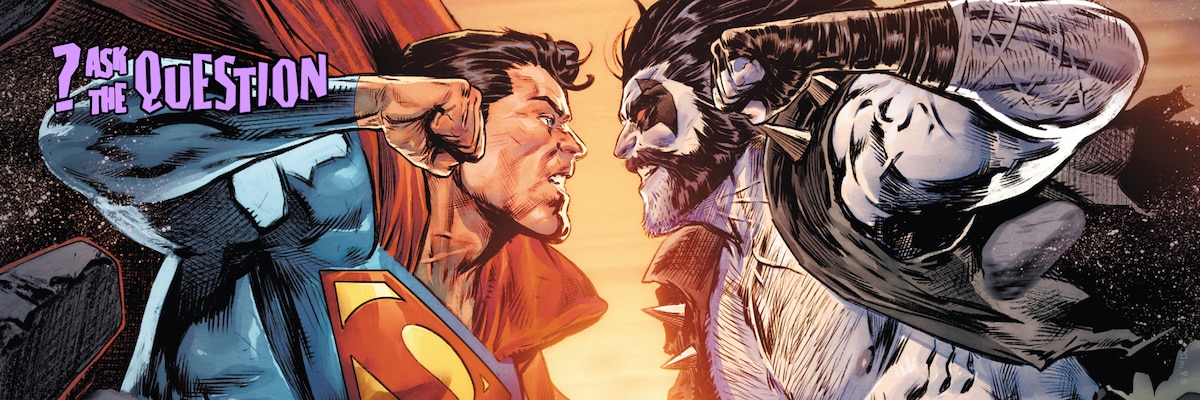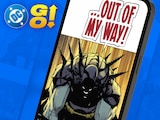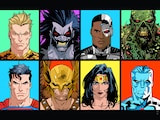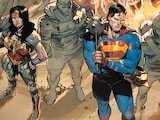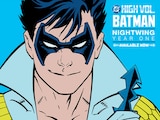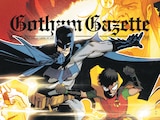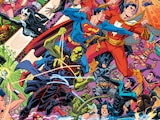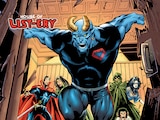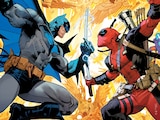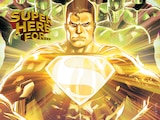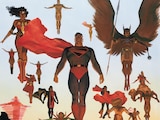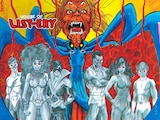It’s that time again. I’m Alex Jaffe, solver of mysteries and deliverer of truth who’s best known to the DC Official Discord Server as HubCityQuestion. Every day, I take your questions about the deep vastness and granular obscurities of the DC Universe and set the record straight. And every month, I take some of my favorite questions and feature the answers here for all of you. This was a busy month over on the Discord, and it’s only getting busier. So, let’s get to it.
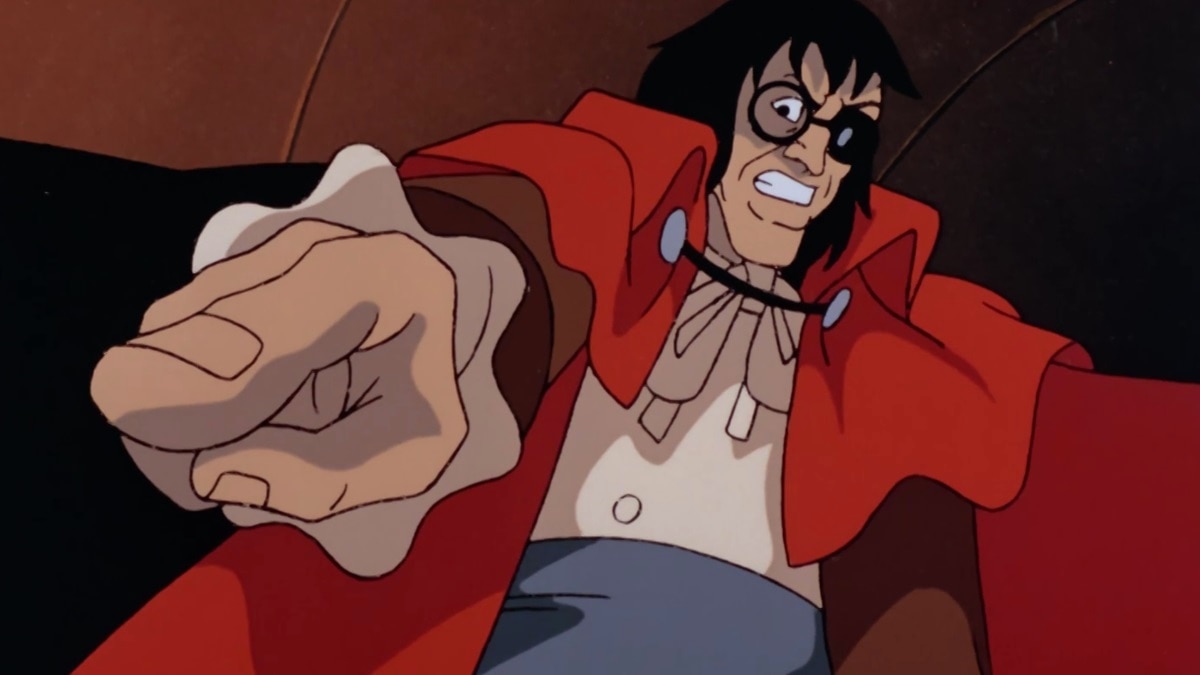
Titoune asks:
Does Sewer King exist in mainline comics or was he only a creation for BTAS? When I watched episode 6, I was surprised by the character.
Sewer King is an original creation of Batman: The Animated Series. Early in the run of the show, the studio was concerned that not enough episodes featured child characters that a young audience could relate to. In catering to those studio notes, the writing team developed such episodes as “I’ve Got Batman in My Basement,” which features two Gotham children coming to Batman’s rescue from the Penguin. It also gave us “The Underdwellers,” the episode where the Sewer King enlists Gotham’s young orphans to work as his crime ring.
Sewer King would be introduced to the comics in 2006’s 52 #25…as a corpse. Alongside the likes of the Batman villains Mirage and Kite-Man, Sewer King was presented as one of the villains killed by Bruno Mannheim for failing to fall in line with his power grab in the year following Infinite Crisis. He would be reintroduced with new significance in 2022’s Batman/Catwoman Special, as a key figure from Selina Kyle’s past—taking her under his wing as a young girl after she runs away from the orphanage.
Rune asks:
Was Birds of Prey: Siege never published? I can't seem to find it for some reason.
I see you’re referring here to the end of the 1997 one-shot Birds of Prey: Black Canary/Batgirl, which ends on the note, “To be continued in Birds of Prey: Siege.” For the first year of Birds of Prey stories, beginning with their debut in Showcase ‘96 #3, the now signature team had no home in an ongoing series. Rather, the Birds would show up in their own one-shot stories or an occasional miniseries or guest appearance until they could find a foothold. We never saw Siege, the next planned one-shot after Black Canary/Batgirl, because there was no need for it. By that point, an ongoing Birds of Prey series had been greenlit, and writer Chuck Dixon would continue the team’s story from there. According to Dixon, the plans he initially had for Siege were incorporated into the first Birds of Prey ongoing story arc.
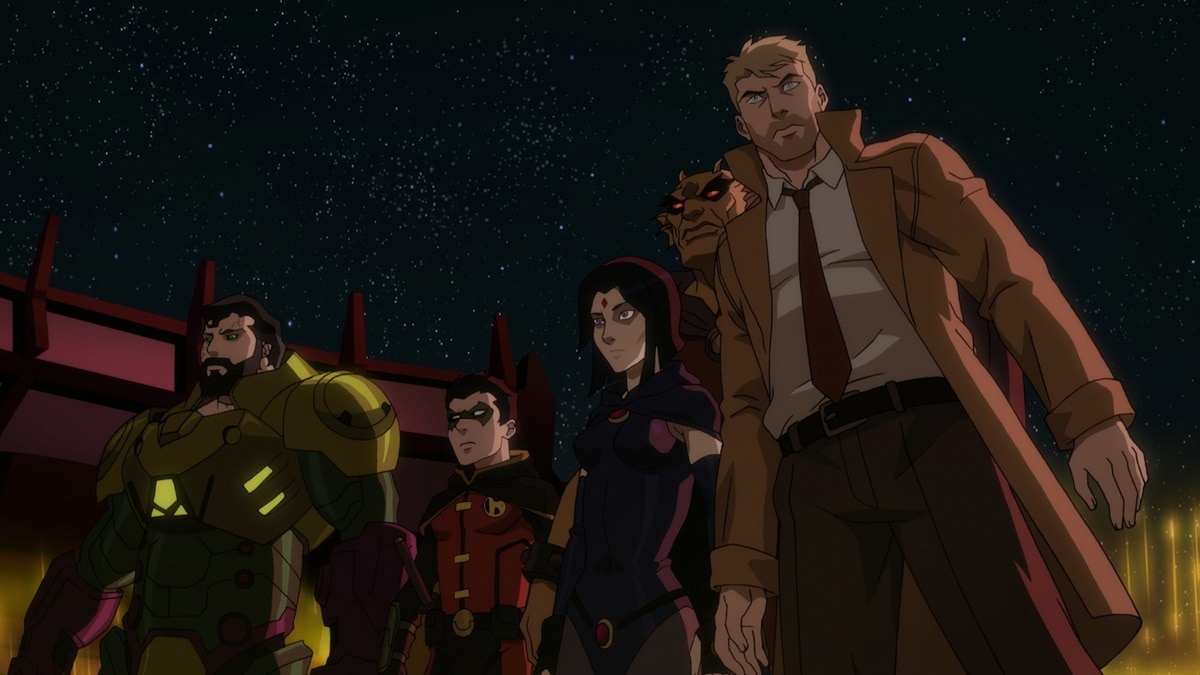
The Master of DC asks:
I was wondering about the animated movie Justice League Dark: Apokolips War. This movie took inspiration from Future’s End, but did it also take inspiration from Darkseid War?
There are certain details where Apokolips War draws some influence from Darkseid War, but the same is true for many Darkseid-related storylines, like JLA: Rock of Ages and Final Crisis. Even its initial cited influence of Future’s End was simply a springboard from which it diverged in a very different direction, in the bare suggestion of exploring a dark, desperate near future for the DC Universe. For the most part, it takes all these elements from different storylines to tell a completely original story.
Esosa Ogieva asks:
How big is DC? Is the cosmology's size stated at any point in time? How many realms are available and whatnot?
The answer to that question has varied a lot over time. With Barry Allen’s discovery of the multiverse in 1961’s The Flash #123, the number of overlapping realities vibrating at different frequencies was presumed to be infinite—up until 1985, when Crisis on Infinite Earths consolidated the scope of the DC reality to a single universe. This remained the status quo (give or take a pocket reality, or the “Hypertime” concept accounting for multiple timelines) up until 2006’s 52, when a new concept was put in place that the DC Universe we knew was one of a concrete number of 52 realities. This remained the status quo until 2015’s Convergence, when the concept of a truly infinite multiverse was reintroduced.
I should also acknowledge the concept of a finite, but arbitrarily large multiverse, as originally introduced in the WildStorm Planetary title. In Planetary, the core reality is said to exist in a snowflake structure with 196,833 different worlds. Why is this relevant? Because that number was brought up again in the context of the recent Outsiders series, connecting the mythology of Planetary to the DC Universe. So, depending who you ask, the answer is either an infinite number of realms, or close to 200,000.
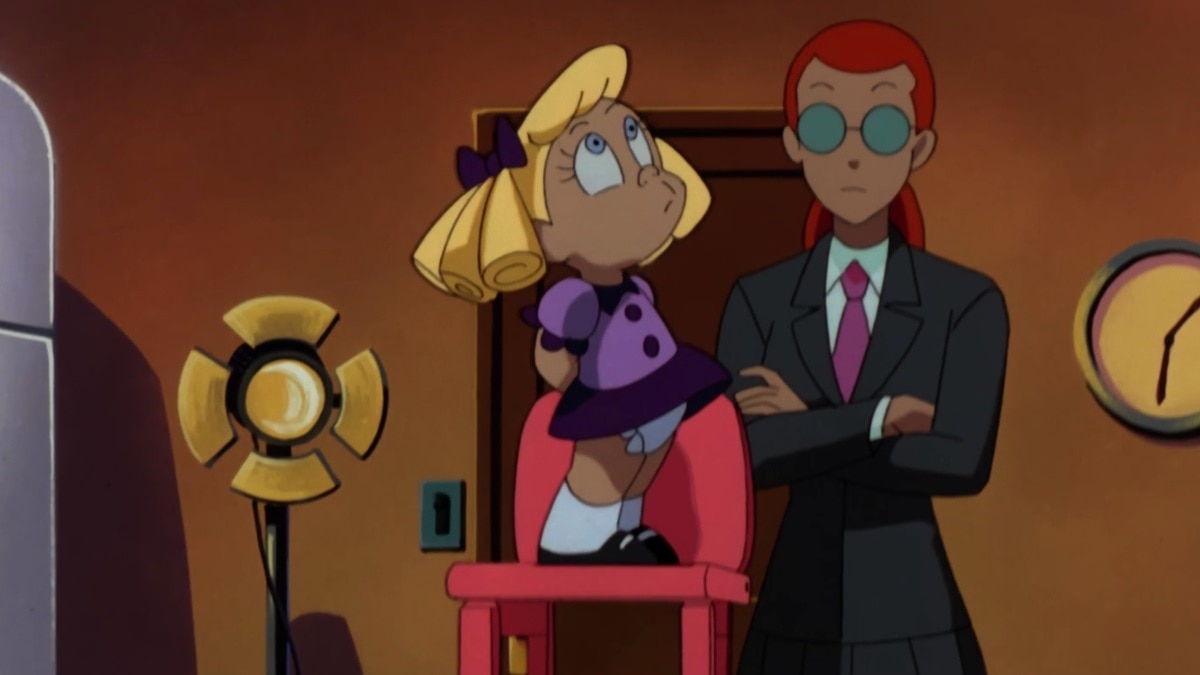
William asks:
Is Baby Doll canon in the main timeline? If so, when was her last appearance?
Despite debuting on TV in 1994, the Batman: The Animated Series villain Baby Doll was absent from comic book continuity until quite recently—first appearing in 2022’s Harley Quinn 30th Anniversary Special and then appearing in a “relationship” with Scarface in the recent Two-Face miniseries.
Seraph asks:
So what is the deal with metahumans? in Young Justice, they've got latent genes with their powers like Marvel’s mutants, in the Arrowverse they got their powers from a particle accelerator explosion. Basically, what I'm trying to ask is because of all the variations in adaptations, what is a metahuman in DC Comics?
In DC comic continuity, metahumans are born with a gene that allows for the potential to gain powers. So, if someone without the metagene was subjected to some super science experiment or supernatural phenomenon, they would probably just die, or nothing would happen. But people with the metagene are able to channel that trauma to trigger their latent abilities. This is why, for example, not just anyone could replicate the accident that gave Barry Allen his powers.
The Young Justice animated series’ explanation is pretty accurate to how it works in the comics, and for good reason—the show’s second season is in part an adaptation of the 1988 Invasion! storyline from the comics which introduced the metagene concept in the first place.

Dub C asks:
How powerful is Infinity Man? Is he stronger than Superman?
Infinity Man is usually depicted in the upper class of power alongside even the most powerful of New Gods, up to and including Darkseid. The best point of comparison we have is in Jack Kirby’s The Forever People #1, where we see Infinity Man easily dispatch Darkseid’s Gravi-Guards. In the same battle, just one Gravi-Guard manages to subdue Superman. So, it does seem, at least in their original context, that Infinity Man is in fact intended to outclass Superman’s power.
Kilowog-core asks:
When was it first established that John Stewart was a marine? When was it first established that he was an architect? I vaguely remember the architect thing happened when he was living on Earth with Katma Tui after the original Green Lantern Corps, but I may be wildly misremembering.
John Stewart’s history as an architect actually dates back to his very first appearance in 1971’s Green Lantern #87, where John tells Hal Jordan a little bit about himself as he’s enlisted for the first time as a Green Lantern. The marine background actually didn’t come until much later, with the 2000 Justice League cartoon. The popularity of John’s depiction in that series would soon carry over from there to the comics.
JJ asks:
Is it possible Batman still has his very first costume? As in the one from his first appearance.
Take a look at the Batcave. Do you think of Batman as a guy who gets rid of mementos?
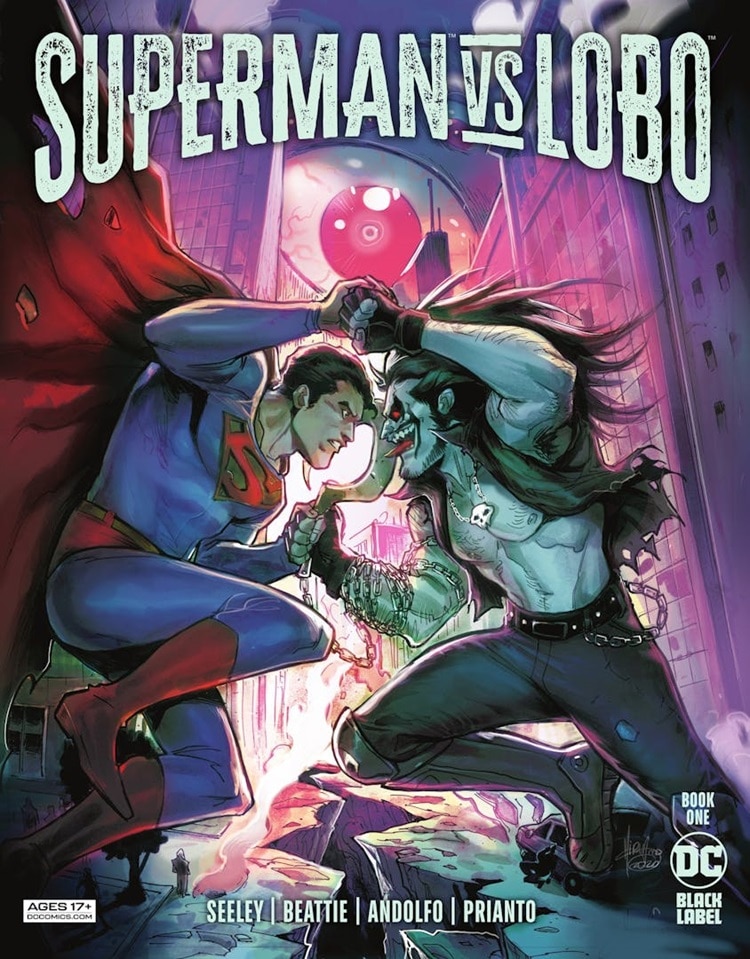
Khamass Pigeon asks:
Is it true that Lobo is the one villain Superman has never beaten in a fight and that Lobo is stronger than Superman? Who has won more times in a fight? Lobo or Superman?
Who started this rumor, Lobo? No, there's no truth to that. In fact, the only time it can really be said that Lobo was able to beat Superman was the first time they fought, in Adventures of Superman #464. There, Superman got Lobo off his case by tricking him into believing he had killed him using a holographic projection. In the many rematches they've had since, every fight Superman has had with Lobo has ended in a draw, outside interference, or with Superman winning.
In order to test this, I went through every single occasion I could find that Superman and Lobo have fought in each other’s titles. Here are my results:
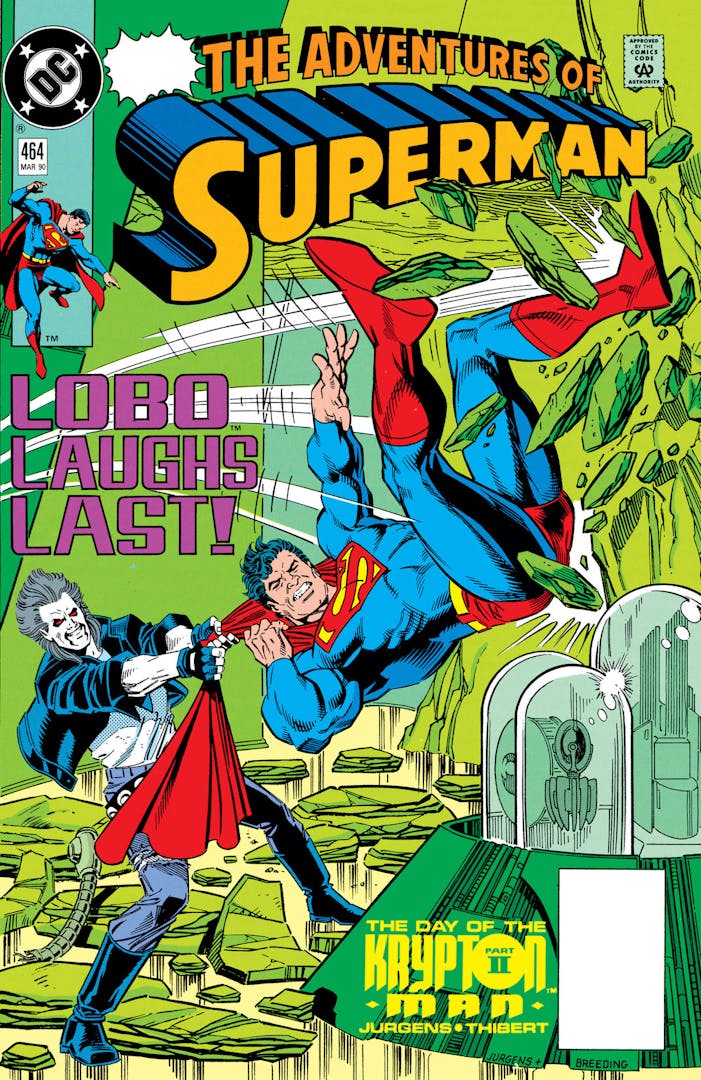
- Adventures of Superman #464 (1990): Lobo. Superman got rid of him by tricking him into believing he had killed Superman with a holographic projection.
- Adventures of Superman Annual #2 (1990): Superman.
- Adventures of Superman Annual #4 (1992): Superman (possessed at the time by Eclipso).
- Superman Adventures #29 (1992): No contest. Lobo retreats from the fight in disgust over the affection between Bizarro and Bizarro Lois.
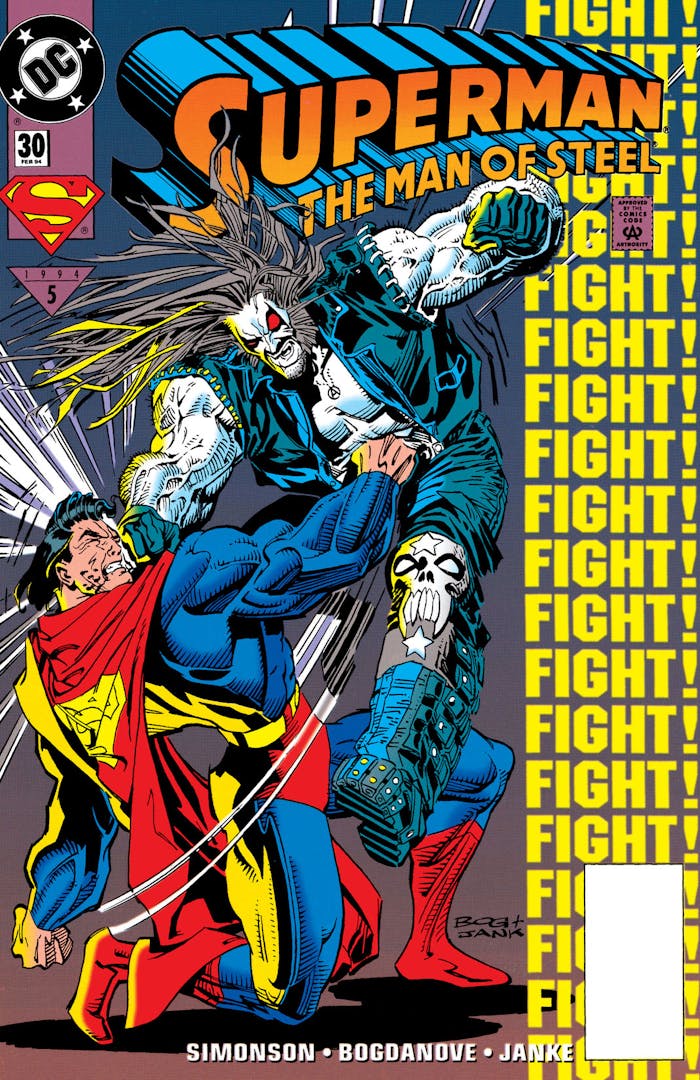
- Superman: The Man of Steel #30 (1993): Draw. Superman leading when the fight is abandoned for a team-up.
- L.E.G.I.O.N. #63 (1993): Superman. Breaks up a bar fight including Lobo.
- Lobo #0 (1994): No result.
- Lobo #50 (1998): Lobo (in a dream).
- Superman Adventures Special: Superman vs. Lobo (1998): Despite the title, Superman and Lobo never actually fight in this one.
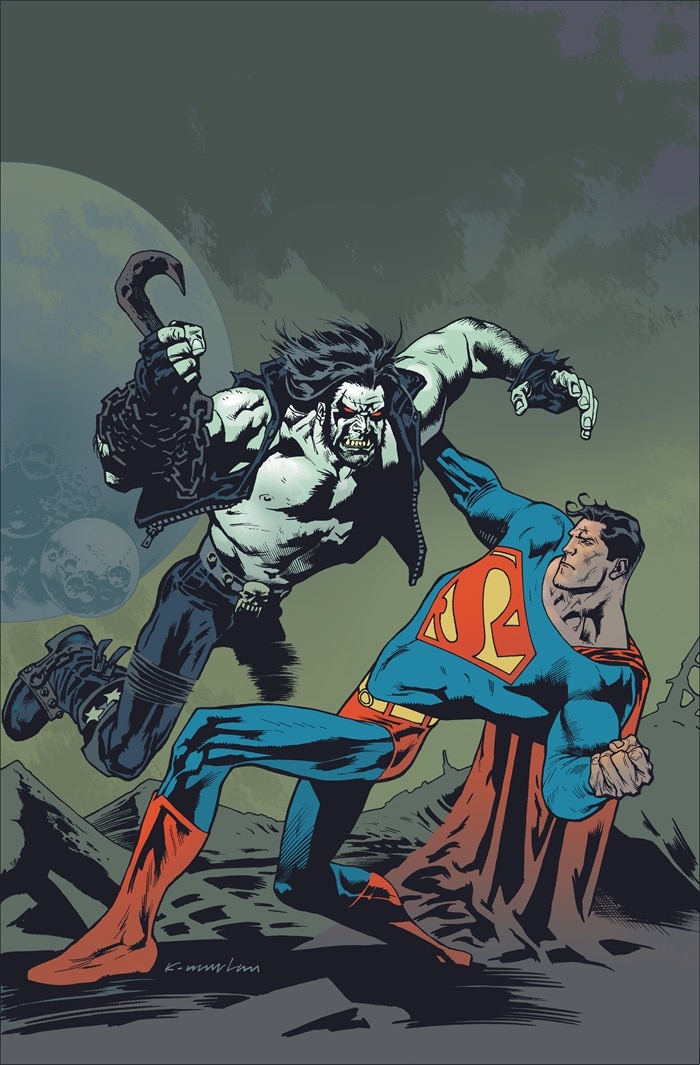
- DC First: Superman/Lobo (2002): No contest. Fight stops after Lobo's client breaches contract.
- Superman Beyond #14 (2012): Interference. Superman captured mid-battle by client while distracted by an imperiled Martian Manhunter.
- Batman/Superman #14 (2014): Superman.
- Batman/Superman #30 (2016): Superman (impersonating Batman).
- Superman: American Alien #7 (2016): Superman.
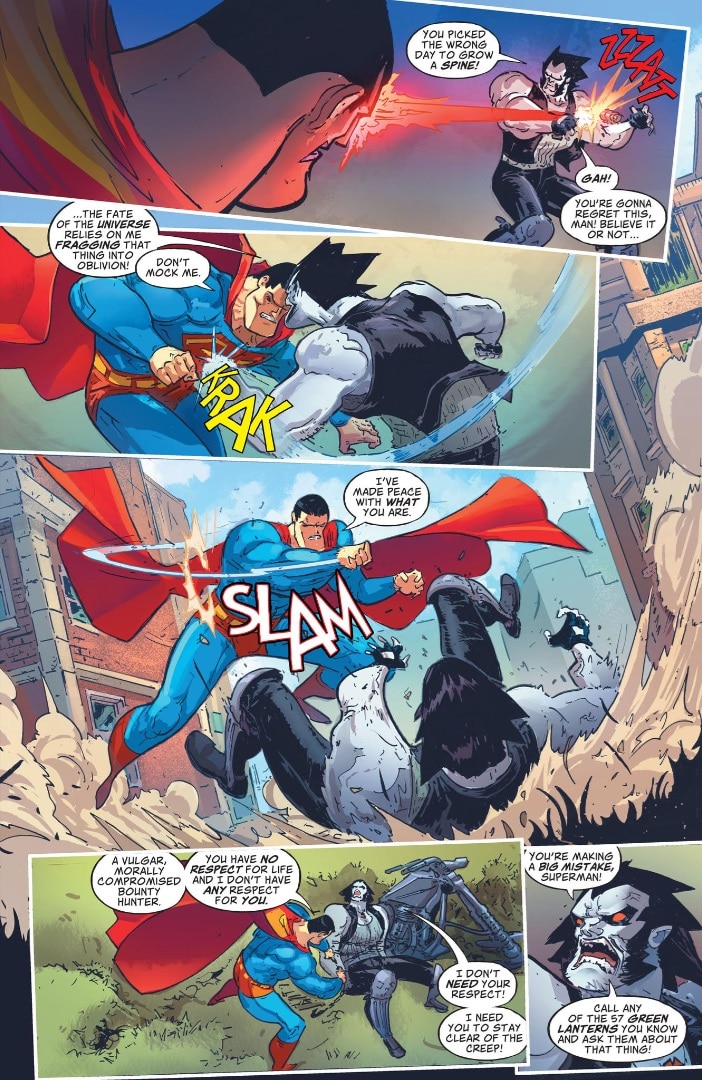
- Superman: Man of Tomorrow #10 (2020): Superman, though Lobo wasn't ready.
- Superman vs. Lobo #1 (2021): Superman.
- Superman vs. Lobo #2 (2021): No fight.
- Superman vs. Lobo #3 (2021): Interference. Batman impales Superman with a Kryptonite spear mid-battle.
- Superman #14 (2024): Interference. Superman captured by General Chacal mid-battle.
The data speaks for itself.
I <3 Naruto Manga asks:
Does Aquaman still have the weakness of needing to be near water?
In Pre-Crisis continuity, water deprivation was one of Aquaman’s most persistent weaknesses. In modern comics, though, it hasn’t really been a factor. That’s because in accordance with Aquaman’s current origin story, he grew up on the land, and didn’t discover his Atlantean heritage until later in life. In current continuity, Aquaman is about as dependent on hydration as you or me.
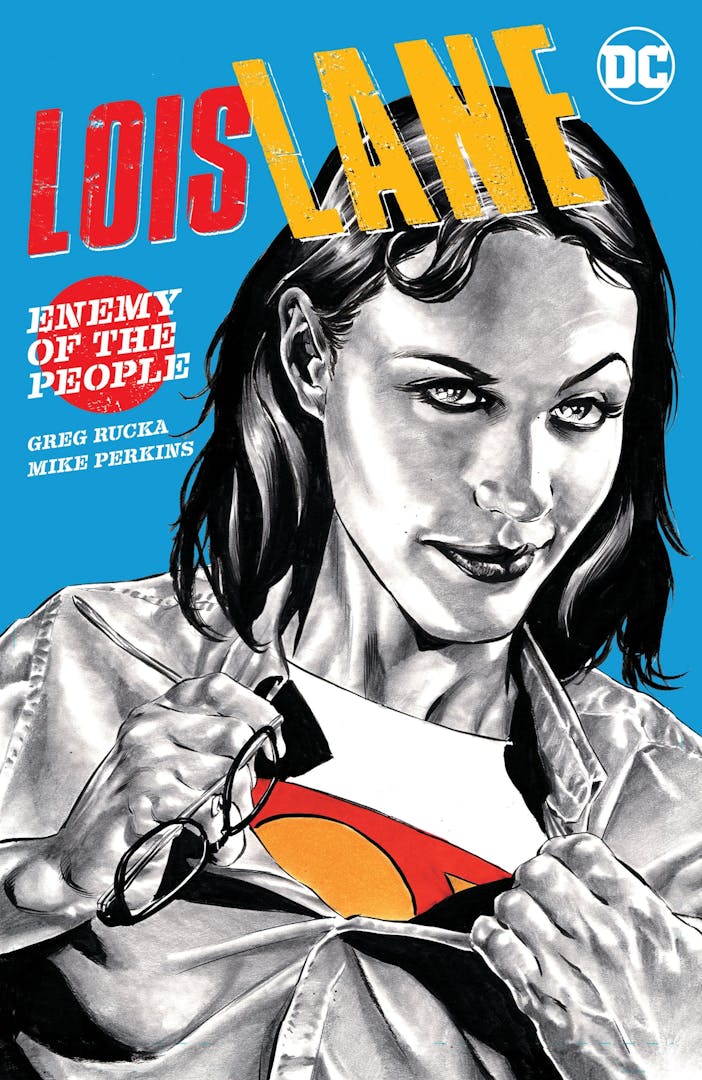
Rod, Lord of the Dance asks:
Is it known how it originally got started that Superman has so many supporting cast members with the initials LL? Was it all a coincidence, or is there some meaning to it?
We don’t actually know how it got started, but we can say where—in early Superboy stories, where it was used for characters like Lana Lang and Lex Luthor (who previously just went by “Luthor”) to highlight their significance. The legend is that it may have been an inside joke between Jerry Siegel and Joe Shuster about one of Shuster’s girlfriends. But that’s never been confirmed. Just as likely, it was simply a mnemonic device, the same way Stan Lee tended to give his characters alliterative names.
This is all just a fraction of the great questions we got this month in the DC Community, which is where you can catch me in between each of these columns. Reading the answers is fine and all, but you haven’t truly experienced this feature until you ASK…THE QUESTION.
Alex Jaffe is the author of our monthly "Ask the Question" column and writes about TV, movies, comics and superhero history for DC.com. Follow him on Bluesky at @AlexJaffe and find him in the DC Official Discord server as HubCityQuestion.
NOTE: The views and opinions expressed in this feature are solely those of Alex Jaffe and do not necessarily reflect those of DC or Warner Bros. Discovery, nor should they be read as confirmation or denial of future DC plans.
